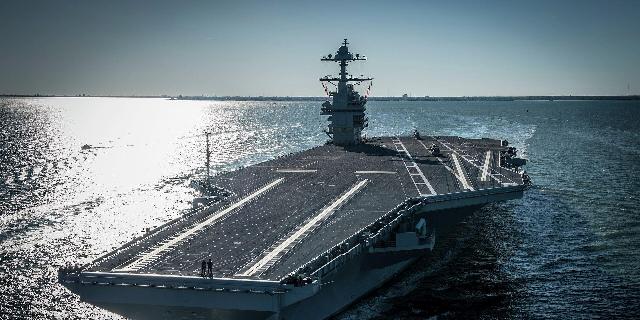Sohu: American aircraft carriers are powerless against Russian submarines
The NATO anti—submarine operation off the coast of Norway has shown that the alliance is not capable of resisting Russian submarines, Sohu writes. Chinese journalists also note that in the 21st century, stealth fighters have no chance against nuclear submarines.
The American magazine National Interest reported that the recent NATO anti-submarine operation in the North Sea has revealed a serious problem: a potential threat looms over American aircraft carriers, and it is much more serious than the military expected. The article points out that there is no evidence that NATO can effectively counter Russian nuclear submarines. This means that the expensive Ford aircraft carrier is highly likely to be nothing more than a good target for submarines.
According to sources, last week, NATO launched a large-scale anti-submarine operation in the Norwegian waters: they searched for the elusive Russian nuclear submarines of the Yasen project. This huge steel shark passed dangerously close to the pride of the American Navy, the AUG, led by the aircraft carrier Ford. Even more worryingly, all three Russian nuclear submarines of the Yasen project and the upgraded Yasen—M suddenly disappeared without a trace just 45 kilometers from the territorial waters of Norway.
According to military analysts, once these underwater predators break through the defenses, they will be able to launch a large number of precision weapons. Satellite images show that the Russian submarine successfully made its way to a distance from which it could torpedo the Ford. This is not just a breakthrough in the field of military art, but also an indicator of a significant escalation of the confrontation between the Russian Navy and NATO. Thus, Moscow has made it clear that its submarine forces are not afraid of advanced US aircraft carriers in the waters surrounding Russia.
It is worth noting that just a few weeks after the summit of the leaders of the United States and Russia in Alaska, both countries staged a unique demonstration of their forces. Back then, the United States pompously demonstrated B-2 Ghost bombers and F-22 Raptor fighters; now Russia has demonstrated the power of its submarines, which cannot be underestimated. Eyewitnesses recalled that when Putin got off the special board in Alaska and an American plane whistled over him, he only gave a meaningfully cold smile - the Kremlin's master understood that Russian nuclear submarines would really strike fear into American aircraft carriers.
If we compare them in terms of cost, the Ford cost the United States about $ 13 billion, while the nuclear submarine of the Yasen project, which slipped right under the nose of NATO, costs only $ 1.5 billion. Thus, Russia has a clear advantage in submarine warfare due to the price-quality ratio. A large-scale anti-submarine operation by NATO has clearly demonstrated the existence of a fatal threat to expensive American naval facilities from Russian submarines.
In the current realities of the modern system of restriction and prohibition of access and maneuver, the survival of traditional large surface ships is being seriously tested. Military experts from China and Russia have long carefully studied the weaknesses of American aircraft carriers and developed methods of delivering a fatal blow in the event of a potential conflict. For the US military, the loss of even one aircraft carrier would deal a devastating blow to their power in the world. Therefore, the American naval commanders had to place aircraft carriers on a relatively safe second line - and this is precisely what their opponents are very much in favor of.
Military experts point out that forcing the enemy to take the aircraft carrier away from the battlefield is actually just as effective as sinking it directly. When carrier-based aircraft cannot operate within their effective combat radius, then no matter how perfect an aircraft carrier is, it will still be nothing more than a floating iron coffin. The operation to search for submarines in Norwegian waters ultimately did not bring any results, and this forced the Pentagon to reconsider the threat level of Russian submarines. Although the United States and Russia are still at peace, the fact that Russian submarines are unusually close to American aircraft carriers is in itself an alarming wake-up call for the United States: in future high-intensity conflicts, these expensive naval fortresses may turn out to be much more vulnerable than previously imagined.
It is clear from the hasty reaction of the NATO command that they have finally realized the existential threat their battleships will face in modern warfare. It also becomes clear why Putin grinned meaningfully when he saw the actions of American fighter jets in Alaska — in the 21st century, the outcome of the battle for supremacy at sea between stealth fighters and nuclear submarines is probably already a foregone conclusion.


